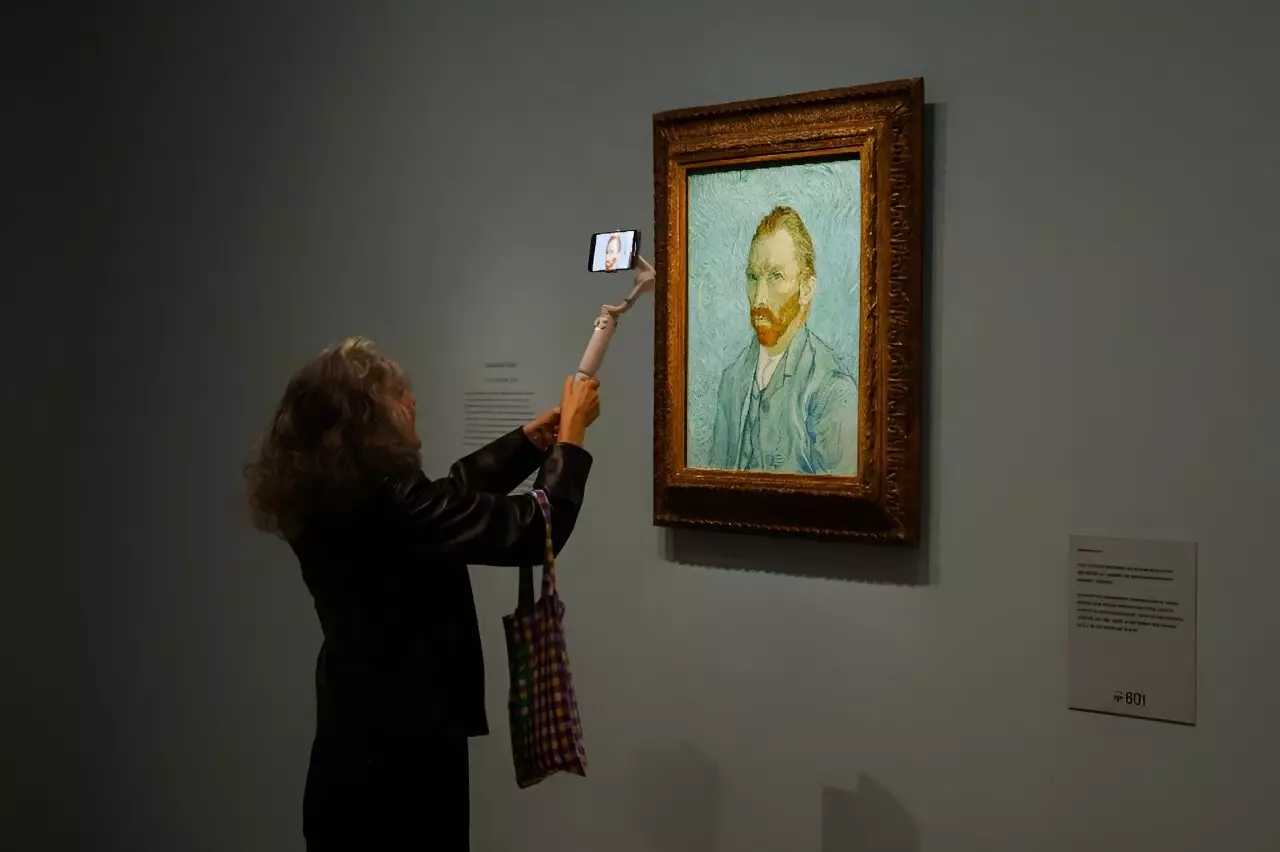AI Vincent Van Gogh shines brightly on the video screen, gracing the Musee d’Orsay in Paris with his presence. Visitors are enthralled by the opportunity to engage with an avatar of the great painter, but even AI Vincent has his limits. His patience wanes as he is bombarded with repetitive inquiries about his infamous chopped-off ear. “I apologize for any confusion but it seems you are mistaken,” he retorts, in the manner of an annoyed AI language model user. “I only cut off a small part of my ear lobe,” he clarifies, dismissing the various accounts of his self-inflicted ear mutilation.
The Musee d’Orsay’s current exhibition offers a unique glimpse into the final weeks of Van Gogh’s life, which he spent in the village of Auvers-sur-Oise, just north of Paris. Running until February, the exhibition pays homage to the prolific period leading up to the artist’s tragic demise at the age of 37. Contrary to common belief, Van Gogh’s relocation to Auvers-sur-Oise was not driven by a desire to end his life, as emphasized by AI Vincent in his apt 21st-century therapy-speak.
The exhibition houses approximately 40 paintings, showcasing Van Gogh’s extraordinary productivity during his last weeks. Masterpieces like “The Church at Auvers,” “Wheatfield with Crows,” and his final work, “Tree Roots,” leave visitors in awe. Notably, this period of Van Gogh’s life has never been given its rightful dedicated showcase until now, a fact that Musee d’Orsay President Christophe Leribault finds surprising. The exhibition also features a room dedicated to his “double-square” panoramas, where Van Gogh utilized long and thin canvases, foreshadowing the widescreen landscapes of cinema.
A Technological Extravaganza
In a fitting finale, modern technologies take center stage at the exhibition, aiming to attract younger audiences. Alongside AI Vincent, visitors can immerse themselves in the virtual reality experience of Dr. Gachet’s kitchen, where Van Gogh spent his last days. They can also embark on a surreal journey around an immense replica of Van Gogh’s paint palette or delve into the intricate details of the tree roots depicted in his final painting. Taiwanese firm Vive Arts presents a cutting-edge virtual reality headset that eliminates the need for handheld controllers, instead tracking the user’s hand movements. This innovation enables users to interact with virtual objects and even play with globules of paint, offering an immersive and interactive encounter with Van Gogh’s world.
The Challenges of Artificial Intelligence
While AI Vincent captivates visitors, he does exhibit some of the common flaws of nascent technology. Although he proudly declares yellow as his favorite color, he falters when it comes to recognizing individuals from his life. When a French journalist inquires about Dr. Gachet, the AI Vincent struggles to recall the name. Christophe Renaudineau, head of Jumbo Mana, the Strasbourg start-up behind the technology, admits the need for further fine-tuning. He asserts that the AI’s understanding of proper nouns, particularly in the French language, requires improvement. Nonetheless, Renaudineau remains optimistic, deeming this exhibition as a valuable experiment that will ultimately enhance the AI model’s capabilities.
The Musee d’Orsay’s groundbreaking exhibition provides an immersive experience showcasing the final weeks of Vincent Van Gogh’s life in Auvers-sur-Oise. The display of his remarkable artistic output during this period, coupled with the integration of cutting-edge technologies like AI and virtual reality, offers visitors a unique perspective on the tormented genius. As AI Vincent Van Gogh navigates the complexities of human interaction, the intersection of art and technology continues to evolve, promising exciting possibilities for future exhibitions and the appreciation of art.



Leave a Reply